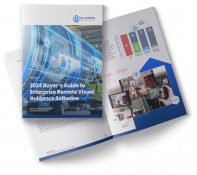Help Lightning Blog
Employee Enablement Ideas That Will Transform How You Think About the Impact of Human Resources

Looking for employee enablement ideas? Employee enablement is transformative because it capitalizes on an individual’s strengths, rather than focusing on micromanagement. There has been a huge shift in recent years to give employees the resources to succeed on their own, rather than forcing them into a box of rigid tasks and objectives. Employee enablement is, in short, empowerment. But the struggle a creative human resources department faces is how to provide the right tools in the ideal number to foster empowerment.
Developing Culture and Implementing Technology With Employee Enablement Ideas
Traditional employee enablement focuses on both culture and tools. Looking toward the culture of an organization, HR works to foster a more transparent environment built on mutual feedback. Though culture enhancement or change is more intangible, in some ways it is easier than the other element of enablement: tools. With the onset of modern tech, too often companies will force-feed their employees an unprecedented amount of software and programs they are expected to rely on. Technology can actually get in the way of efficiency if it is used purely for its own sake.
These days, there are many options to provide an ideal level of employee enablement. Organizations may use incentives or extra benefits when teams reach certain milestones. They may offer their employees concurrent coaching from key mentors, engage in regular performance reviews, and host targeted educational webinars. From the human resource expert’s perspective, it is valuable to identify strengths and weaknesses in how their enablement efforts either meet or fail to meet employee needs. This optimization reduces waste and seeks to eliminate tools or resources that don’t live up to expectations, seeking an honest take on what employees get the most help from. You can also effectively address a workforce skills gap using technology.
Employee Enablement Ideas That Fit Perfectly Into the Objectives of Human Resources
How can you decide what technology will provide the best combination of support and independent thinking? One option is to focus on a single tool that embodies the spirit of employee enablement and includes a variety of enterprise wide use cases. Remote Visual Assistance (RVA) software can fit into an enabling position by providing the missing piece in employee training and support. RVA is based on augmented reality, merging two real-time video streams. It uses commonly available tech like a smart phone or tablet. This allows employees in different locations to give each other ‘cues’ using gestures. As if they were there in person. woking side-by-side!
Research indicates that nonverbal cues are 430% more effective than verbal cues. Nonverbal cues make verbal/nonverbal communication combination up to 10 times more effective.
British Journal of Clinical Psychology
RVA is the swiss army knife in a human resource department’s tech stack. It encompasses multiple tools in one smoothly integrated system. HR could suggest an RVA tool like Help Lightning to enable employees to reach their full potential, achieve greater performance, and overall feel more supported in attaining their objectives. How can it do this? Here are a few simple examples:
1. Real-time information transfer between on-site employees and management:
In industries where employees are commonly ‘out of office’ for projects, they can use RVA to immediately convene with their leadership on tricky tasks and gain hands-on guidance.
2. Troubleshooting with remote experts:
A company could provide its employees with augmented reality experts on an as-needed basis. If an engineer or other professional is in the middle of a complex task, they would have the ability to interface with remote experts. This could reduce employee stress in the most tricky situations. It can also give them the sense that they always have a helping hand when needed.
3. Providing immediate feedback in virtual training:
When onboarding or training new remote or virtual-based employees, the organization could use RVA so that the experience is smoother and more lifelike. This application offers high value for a variety of industries.
These three examples are just a few use cases of how RVA supports employee enablement (check out more here). When employees get hands-on support, they perform better than when they are left to flounder without appropriate aid. Yet there is also the problem of unnecessary or unwanted help, which could be demoralizing or counterproductive. Augmented reality gives the optimal balance of targeted support.
When Is Remote Visual Assistance the Right Tool For You?
Remote Visual Assistance works so well for employees because it isn’t cumbersome. It is an everyday tool, supporting efficiency, which is ultimately an employee-friendly objective. HR departments are the perfect place to start implementing RVA and can sell the idea to internal teams. Emphasizing how it can broaden communication amongst different groups while connecting diverse skill sets in an organization. RVA can be leverage for in-house tech support, sales demonstrations, customer training, and much more.
Not sure if RVA is right for your company? This checklist can help:
Your company is a good fit to use RVA for employee enablement if…
- You are in the service industry, manufacturing, energy, or healthcare.
- Many of your employees/key staff and especially your company’s experts work remotely or out of the office.
- Your employees deal with complicated equipment that’s critical to the running of the business on a regular basis.
- Your employees are regularly working in physical implementation settings, such as engineering, IT, and quality assurance. Or work in support of these teams.
Remote Visual Assistance is the creative solution to increase employee enablement. Learn more about how Help Lightning can get you on track to better results. Request a free demo today.












